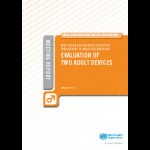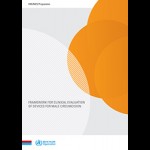As voluntary medical male circumcision was scaled up as an additional HIV prevention intervention in high HIV prevalence settings, it became clear that conventional surgical circumcision methods posed challenges because they require surgical skills and infrastructure that are in short supply in priority countries.
Innovations in clinical methods of adult male circumcision, such as device-based methods, have the potential to make the procedure easier, faster, and safer to perform by non-physician providers as well as physicians in a wider variety of settings. Alternatives to conventional surgery may also influence the acceptability of the procedure among men, their partners, and the parents of uncircumcised youth, as well as health care providers. A number of different types of devices for adult male circumcision are available in the market, but until recently evidence on their clinical safety and efficacy was limited and was not collected systematically, particularly in African settings.
WHO prequalification of devices
The World Health Organization (WHO) established a Prequalification Programme for Devices for Male Circumcision for HIV Prevention to promote and facilitate equitable access to safe, appropriate, and affordable male circumcision devices. Prequalification indicates that a device meets international standards for three components: 1) the regulatory dossier, 2) the inspection of the quality management system under which the product is manufactured, and 3) clinical studies on efficacy and safety in settings of intended use. WHO prequalification does not replace countries’ own regulatory processes but paves the way for procurement of the devices by United Nations agencies, WHO member states, donors, and other interested purchasers. Current information on the status of the applications for prequalification is available on the WHO website.
Framework for evaluation
WHO, through its Technical Advisory Group on Innovations in Male Circumcision, developed the Framework for the Clinical Evaluation of Devices for Male Circumcision, which stipulates a pathway of clinical studies to provide the data for WHO to evaluate the clinical safety and efficacy of a device for use in VMMC programmes in resource-limited settings. The framework also provides suggestions for a phased introduction of male circumcision devices within national programmes.
Guideline on use
In 2020, WHO updated its 2013 conditional recommendation on the use of devices as safe, efficacious methods of surgical male circumcision. The recommendation remains conditional because the use of devices was limited through 2018; however, device-based male circumcision may still help expand coverage, increase programme impact, and enhance safety. The WHO recommendation applies in settings where devices are used by health care providers, including physicians and mid-level providers, who are appropriately trained and competent in the use of the specific device and where the necessary surgical backup facilities and skills are available.
A current list of prequalified devices is available on the WHO website.








